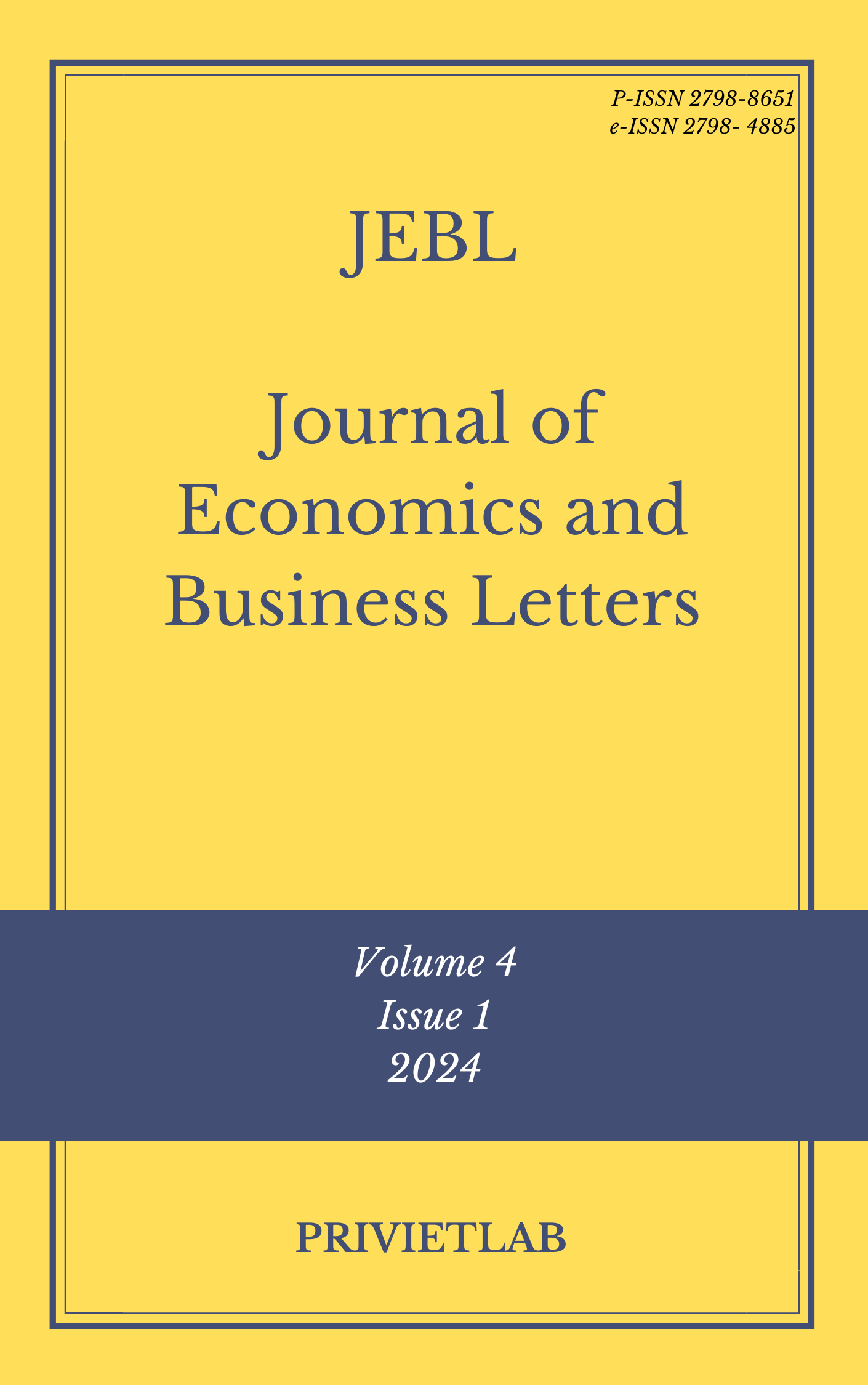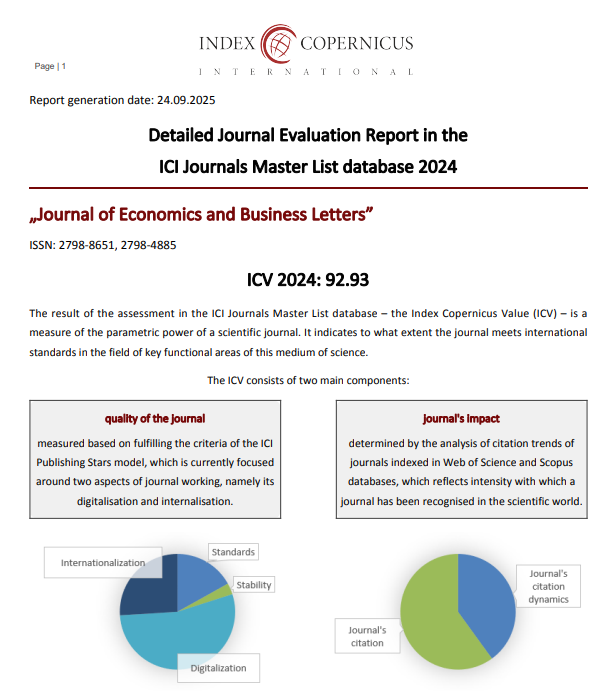The influence of liquidity, profitability, company size, company growth and company age on company value (Case study on food and beverage companies listed on the Indonesian Stock Exchange period 2018 - 2022)
DOI:
https://doi.org/10.55942/jebl.v4i1.303Keywords:
Liquidity, Profitability, Company size, Company Growth, Company age, Company ValueAbstract
The aim of carrying out this research is to determine the influence of Liquidity, Profitability, Company Size, Company Growth and Company Age on the Value of Companies in the Food and Beverage subsector listed on the Indonesia Stock Exchange for the 2018-2022 period. This research approach is based on a quantitative approach because this research has a clear and orderly flow. This type of research is a type of quantitative descriptive research. The nature of this research is descriptive explanatory. In this research, the population used is all 26 food and beverage companies listed on the Indonesia Stock Exchange from 2018 to 2022. Sampling: Using the purpose sampling method, namely a sampling technique with certain considerations, 85 research samples were obtained. The research results show that there is no partially significant influence between Liquidity and Company Value. There is a partially significant influence between Profitability and Company Value. There is no partially significant influence between Company Size and Company Value. There is a partially significant influence between Company Growth and Company Value. There is no partially significant influence between Company Age and Company Value. Liquidity, Profitability, Company Size, Company Growth and Company Age simultaneously have a significant effect on Company Value.
References
Adriani. (2022). Management Accounting. East Java: Zifatama Publisher.
Ghodang, Hironymus. (2020). Quantitative Research Methods: Basic Concepts & Applications of Regression and Path Analysis Using SPSS. Medan: Group Partner Publishers.
Hendrawan, Endang Siti Rahayu, and Sugiharti Mulya Handayani. (2019). Performance of Micro, Small and Medium Enterprises (MSMEs) Food (Electronic Source). Surakarta: Indotama Solo.
Ismaini (2020). Cost Accounting (Concept and Implementation in the Manufacturing Industry). Yogyakarta: Markumi.
Jaya, I. M. L. M. (2019). Health Data Processing Using SPSS. Publisher Thema Publishing, Yogyakarta.
Nurlinda (2020). Financial Report Analysis (Integrated and Comprehensive Edition). Jakarta: Gramedia.
Priyatno, D. (2018). SPSS Easy Guide to Data Processing for Students & the General Public. CV Publisher. Andi Offset, Yogyakarta.
Purnomo., Rochmat Aldy. (2017). Economic and Business Statistical Analysis Using SPSS. Ponorogo: UNMUH Ponorogo Press.
Putrandi and Amar (2020). Asset and Liability Management (ALMA) for Rural Banks and Microfinance Institutions. Yogyakarta: Andi Offset.
Riyanto, S., & Aglis, A. H. (2020). Research Methods Quantitative Research in the Fields of Management, Engineering, Education and Experimentation. Yogyakarta: Deepublish Publisher.
Situmeang and Harahap (2022). Financial management. Yogyakarta: Zahir Publishing.
Sugiarti, Eggy Fajar Andalas and Arif Setiawan. (2020). Literary Qualitative Research Design. Malang: Muhammadiyah University of Malang.
Sujana, I Wayan. (2019). Nyiramag Layon Ceremony at Merajan at Pasek Gede Jong Karem, Kapal Traditional Village, Mengwi District, Badug Regency. Bali. Nilachakra
Wahyudi, S. T. (2017). Economic Statistics: Concepts, Theory and Application. Publisher UB Press. Poor.
Downloads
Published
How to Cite
Issue
Section
License
Copyright (c) 2024 Journal of Economics and Business Letters

This work is licensed under a Creative Commons Attribution 4.0 International License.
















